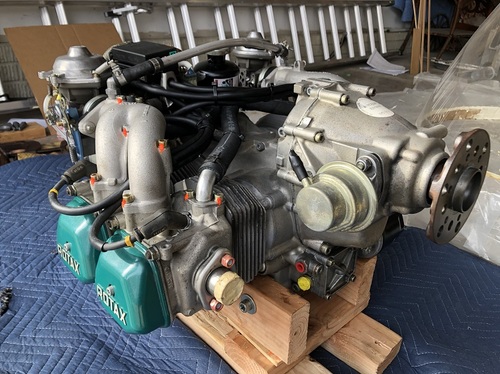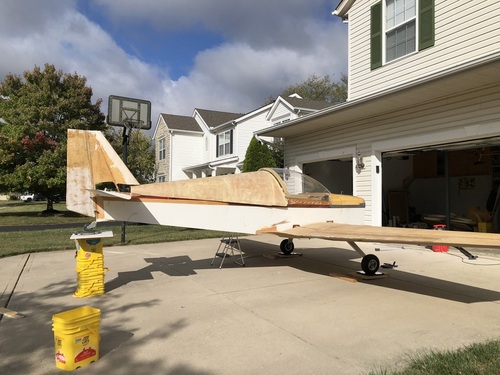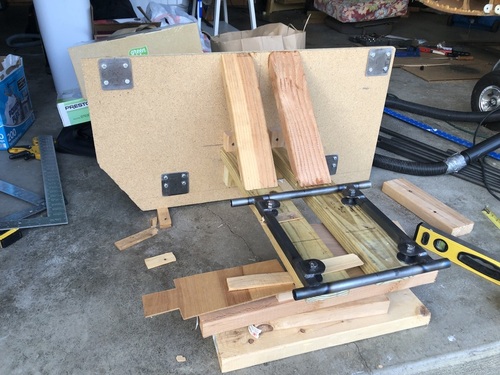Engine
Below: I've purchased this used Rotax 912 ULS 100 hp engine. It just came out of a flying Remos aircraft, has 425 hours on it, and has recently been completely overhauled. Time between overhaul for this engine is 1,500 hours. I made up my mind to go with a Rotax after becoming proficient on an Aeroprakt which has the same powerplant. Lots of horsepower for the weight, very reliable, and I know mechanics close by who are familiar with the engine. As seen in the picture, the engine weighs about 115 pounds. Fitted with propeller, exhaust, fluids and everything else, it should be about 145 pounds max.
Above (Oct. '23): The next big step with the engine will be to fabricate a custom mount. I have a friend who will weld one up for me in December.
In order to get an idea of how far forward the engine will need to sit, I did this early weight-and-balance experiment. Except for micro and paint, everything that has any weight from the firewall backwards is accounted for in the above picture, including some cushions I threw on the seats and a fiberboard dashboard to simulate instrument weights.
With the initial fuselage W&B calculations done, I used math to fiddle with different hypothetical engine positions, including the known weights and positions of a Warp Drive propeller, oil tank, battery, radiators, mount, etc. My basic target was to figure out how to keep the airplane within the acceptable center of gravity range with an empty fuel tank and two 200 lb. humans on board with 25 pounds of baggage in the rear compartment.
The good news is that my plane is going to be light. I can realistically expect it will be 600-635 pounds when complete. It has also become very clear that my engine, because it is light, will need to sit pretty far forward, much like Herbert Fuhrle's (scroll down his page to see the engine on its mount), who put the same engine on his KR.
The Rotax engine uses water cooling for the cylinder heads, so the other challenge will be where to put the large-ish radiator. My model for keeping things streamlined within the confines of a KR cowl will be this Sonex installation.
Above (08/06/24): A skilled friend has welded the engine mount bed together beautifully to my specifications. I've made this jig to position the bed where it needs to be in front of the firewall before he attaches the support tubes. The center of gravity of the Rotax 912 ULS will be about 19" forward of the firewall.


